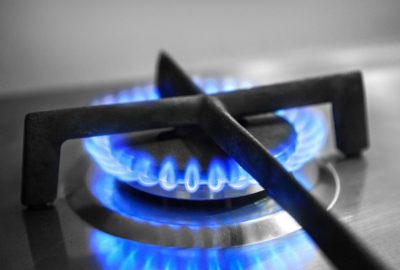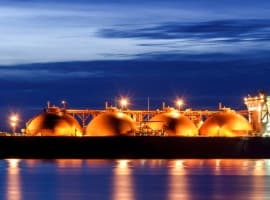By Yogi Schulz
We’ve all read about the heated and continuing debate about the effectiveness and cost of solar and wind renewable electricity generation. Some have hyped these technologies as the saviour for the energy transition to address the impact of climate change. Others have challenged their cost, reliability and lifespan. Where do these technologies play beneficial roles? What facts can help us cut through the spin from both sides of the debate?
Both sides use the widely accepted levelized cost of electricity (LCOE) for the cost comparison. By this measure, solar and onshore wind generation compare favourably to natural gas. In addition, solar and wind become more attractive as the cost of natural gas increases.
However, solar and wind are intermittent and non-dispatchable generators in electricity terminology, while natural gas is continuous and dispatchable. Intermittent means electricity is not always being generated. Dispatchable means a facility can generate electricity at a moment’s notice. These characteristics are critical to maintaining supply continuity and stability of every electricity distribution grid.
To become continuous and dispatchable, solar and wind generation must be complemented by electricity storage such as industrial-scale batteries or pumped hydro. The additional cost makes solar and wind uneconomic in most electricity distribution grids. Here’s the supporting analysis.
Solar vs. natural gas electricity generation
Many forecasters show that the LCOE from solar electricity generation is cheaper than that from natural gas, as shown in the chart below. The cost of solar electricity generation declined dramatically during the past decade as Chinese manufacturers of solar panels improved their manufacturing processes and reduced their prices.
Levelized cost of electricity (LCOE) includes installed capital costs and operating expenses of an electricity generation plant, converted to an equal annual quantity over the plant’s assumed cost recovery period.

Source: , February 23, 2021
These cost forecasts are problematic because they:
- Do not take solar generation intermittency into account. Solar electricity cannot achieve supply continuity, which every customer needs, while natural gas can.
- Assume that the price of natural gas will increase in the future. This assumption may be wrong given the current ultra-low natural gas price and a modestly rising price forecast.
This comparison suggests that adding solar generation to an electricity distribution grid is not practical for meeting continuous demand but can be helpful in:
- Responding to some day-time consumption peaks.
- Charging industrial-scale batteries.
- Providing small-scale backup electricity during a grid outage.
Wind vs. natural gas electricity generation
Many forecasters show the LCOE for onshore wind electricity generation (the chart below) being slightly higher than for solar electricity generation (the chart above). Both solar and wind energy are forecasted to be cheaper than natural gas. The cost of wind electricity generation declined significantly during the past decade as turbine manufacturers gained experience with their manufacturing processes and increased the generation capacity of their turbines.

Source: , T&D World
These cost forecasts are problematic because they:
- Do not take wind generation intermittency into account. Wind is a non-dispatchable generator in electricity terminology, while natural gas is dispatchable.
- Do not consider recent increases due to turbine reliability issues and operating costs. These trends suggest that actual cost experience will be above the median line in the chart above.
- Assume that the price of natural gas will increase in the future. This assumption may be wrong given the current ultra-low natural gas price and a modestly rising price forecast.
This comparison suggests that adding wind generation to an electricity distribution grid is not practical for meeting continuous demand, except in a few steady wind regions, but can be helpful in:
- Responding to some day-time consumption peaks.
- Charging industrial-scale batteries.
Industrial-scale batteries
Complementing solar and wind generation with industrial-scale batteries can reduce intermittency limitations and make them dispatchable generators.
The chart below shows the dramatic cost reduction of industrial-scale batteries, making their use more feasible.

Source: , Bloomberg NEF, June 30, 2022
Adding storage batteries to solar or wind generation makes them a dispatchable generator like natural gas. Unfortunately, the LCOE of electricity sourced from batteries is about 4 times that of electricity sourced from solar, wind or natural gas generation.
Industrial-scale batteries vs. pumped hydro
Complementing solar and wind generation with pumped hydro can reduce intermittency limitations and make them dispatchable generators just like industrial-scale batteries.
The chart below shows that the cost of the two technologies is identical at 4 hours of storage duration. Four hours of storage duration is the widely accepted amount required. If a particular electricity distribution grid requires more storage duration, then pumped hydro becomes more economical than industrial-scale batteries.
Pumped hydro is a facility that generates electricity using a hydroelectric turbine during periods of high prices, typically during the day. It consumes electricity to pump water from a lower reservoir to a higher reservoir during periods of lower prices, typically at night.

Source: , CleanTechnica, April 25, 2020
Pumped hydro is more appealing in hilly or mountainous regions due to lower operating costs and higher reliability. It often requires a high-voltage line at a significant cost to connect to the electricity distribution grid. By comparison, batteries are typically located immediately adjacent to the electricity distribution grid.
This analysis shows that large-scale replacement of natural gas electricity with solar and wind renewable electricity generation is about 4 times more expensive for consumers.
The evangelists for solar and wind renewable electricity generation skate around the high-cost problem with one or more of the following misleading approaches:
- Simply ignore the intermittency and non-dispatchable problems and hope the audience won’t notice.
- Showcase a small electricity distribution grid with unique sunshine or wind characteristics where solar and wind renewable electricity generation can be effective. Then claim that these results are more widely applicable when they’re not.
- Insist that adding CCUS to natural gas to reduce GHG emissions eliminates the cost advantage compared to solar or wind. CCUS doubles the cost of natural gas. It does not increase it 4 times.
- Recommend that solar and wind generation not exceed 10% of the capacity of the electricity distribution grid to which they’re attached. That eliminates the need for electricity storage but achieves only 10% of the energy transition goal.
- Suggest pumped hydro storage as an alternative to industrial-scale battery storage. Unfortunately, that alternative is no cheaper than batteries.
Yogi Schulz has over 40 years of experience in information technology in various industries. He writes for , , and other trade publications. Yogi works extensively in the petroleum industry to select and implement financial, production revenue accounting, land & contracts, and geotechnical systems. He manages projects that arise from changes in business requirements, the need to leverage technology opportunities, and mergers. His specialties include IT strategy, web strategy, and systems project management.
Share This:
More News Articles











